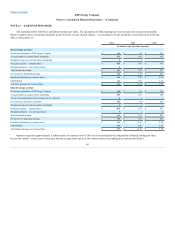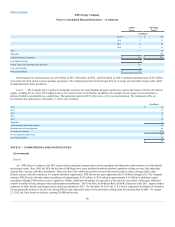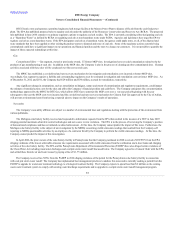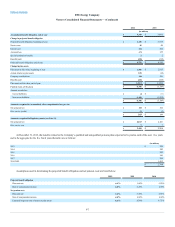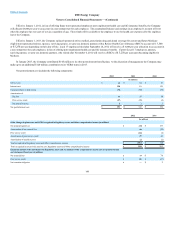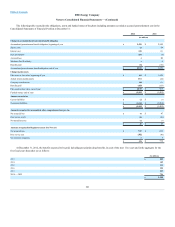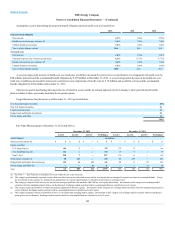DTE Energy 2012 Annual Report Download - page 96
Download and view the complete annual report
Please find page 96 of the 2012 DTE Energy annual report below. You can navigate through the pages in the report by either clicking on the pages listed below, or by using the keyword search tool below to find specific information within the annual report.
Table of Contents
Thus, deferred premium charges could be levied against all owners of licensed nuclear facilities in the event of a nuclear incident at any of these facilities.
Nuclear Fuel Disposal Costs
In accordance with the Federal Nuclear Waste Policy Act of 1982, DTE Electric has a contract with the U.S. Department of Energy (DOE) for the future
storage and disposal of spent nuclear fuel from Fermi 2. DTE Electric is obligated to pay the DOE a fee of 1 mill per kWh of Fermi 2 electricity generated and
sold. The fee is a component of nuclear fuel expense. The DOE's Yucca Mountain Nuclear Waste Repository program for the acceptance and disposal of spent
nuclear fuel was terminated in 2011. DTE Electric currently employs a spent nuclear fuel storage strategy utilizing a fuel pool. The Company continues to
develop its on-site dry cask storage facility and has postponed the initial offload from the spent fuel pool until 2014. The dry cask storage facility is expected
to provide sufficient spent fuel storage capability for the life of the plant as defined by the original operating license.
DTE Electric is a party in the litigation against the DOE for both past and future costs associated with the DOE's failure to accept spent nuclear fuel
under the timetable set forth in the Federal Nuclear Waste Policy Act of 1982. In July 2012, DTE Electric executed a settlement agreement with the federal
government for costs associated with the DOE's delay in acceptance of spent nuclear fuel from Fermi 2 for permanent storage. The settlement provided for a
payment of approximately $48 million, received in August 2012, for delay-related costs experienced by DTE Electric through 2010, and a claims process for
submittal of delay-related costs from 2011 through 2013. The settlement proceeds reduced the cost of the dry cask storage facility assets. The federal
government continues to maintain its legal obligation to accept spent nuclear fuel from Fermi 2 for permanent storage. Issues relating to long-term waste
disposal policy and to the disposition of funds contributed by DTE Electric ratepayers to the federal waste fund await future governmental action.
Synthetic Fuel Guarantees
The Company discontinued the operations of its synthetic fuel production facilities throughout the United States as of December 31, 2007. The
Company provided certain guarantees and indemnities in conjunction with the sales of interests in its synfuel facilities. The guarantees cover potential
commercial, environmental, oil price and tax-related obligations and will survive until 90 days after expiration of all applicable statutes of limitations. The
Company estimates that its maximum potential liability under these guarantees at December 31, 2012 is approximately $ 1.2 billion. Payment under these
guarantees is considered remote.
Reduced Emissions Fuel Guarantees
The Company has provided certain guarantees and indemnities in conjunction with the sales of interests in its reduced emissions fuel facilities. The
guarantees cover potential commercial, environmental, and tax-related obligations and will survive until 90 days after expiration of all applicable statutes of
limitations. The Company estimates that its maximum potential liability under these guarantees at December 31, 2012 is approximately $ 77 million. Payment
under these guarantees is considered remote.
Other Guarantees
In certain limited circumstances, the Company enters into contractual guarantees. The Company may guarantee another entity’s obligation in the event it
fails to perform. The Company may provide guarantees in certain indemnification agreements. Finally, the Company may provide indirect guarantees for the
indebtedness of others. The Company’s guarantees are not individually material with maximum potential payments totaling $ 50 million at December 31,
2012.
The Company is periodically required to obtain performance surety bonds in support of obligations to various governmental entities and other
companies in connection with its operations. As of December 31, 2012, the Company had approximately $ 41 million of performance bonds outstanding. In
the event that such bonds are called for nonperformance, the Company would be obligated to reimburse the issuer of the performance bond. The Company is
released from the performance bonds as the contractual performance is completed and does not believe that a material amount of any currently outstanding
performance bonds will be called.
94




